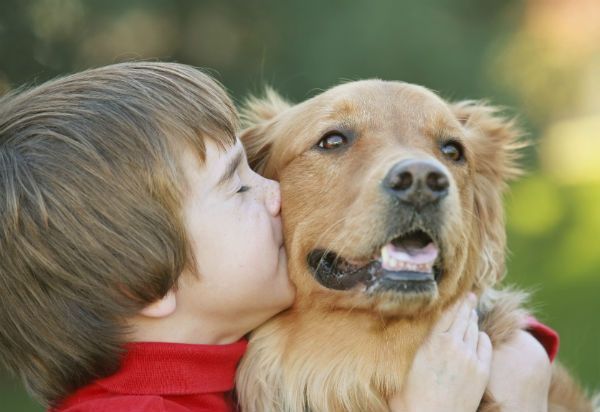The Pet Travel Scheme (PETS) started on 28th February 2000 and allows cats and dogs resident in the UK to visit certain other countries and return to the UK, without quarantine, provided that certain conditions are met.
To use this system, you need to comply with the law, down to the last detail. This is to prevent the transmission of disease from country to country.
Spain is one of the countries that partake in the scheme and this includes the islands but not Ceuta and Melilla.
Only certain sea, air and rail routes are included in the scheme and these include:
- By ferry, Calais to Dover, Coen, Cherbourg, Le Havre and St Malo to Portsmouth.
- By rail, Eurotunnel shuttle service but not Eurostar.
- By air, Certain routes from Europe into London Heathrow. Please check with your airline or tour operator for exact details
The conditions of the scheme
All cats and dogs must:
- Be fitted with a microchip that meets an ISO specification so that it can be read by a standard microchip reader.
- Be vaccinated against rabies with an approved vaccine and have booster vaccinations as recommended. Pets must be at least 3 months old and be already fitted with a microchip before they can be vaccinated.
- Be blood tested about 30 days after vaccination. If your pet fails the blood test it will have to be vaccinated and tested again.
- Wait at least 6 months after a successful blood test result before being allowed entry or re-entry into the UK (unless your pet was resident in the UK and micro chipped, vaccinated and blood tested before 28th February 2000).
Required documentation
You will need three documents to allow your pet top re-enter the UK.
- The PETS re-entry certificate issued by a vet in the UK, certifying that the above conditions have been met before you travel
- An official Certificate of Treatment against a potentially dangerous type of tapeworm and ticks, which must be carried out by a vet 24-48 hours before re-entering the UK. This treatment has to be done each time you enter the UK.
- The Declaration of Residence which you will be asked to complete to declare that your pet has not been outside any of the qualifying countries in the six months before entering the UK. This will be available from the transport company or from MAFF.
- Certain countries including Spain also require and Export Health Certificate, issued in the UK, to allow your pet to enter the country. It is different from the PETS scheme and your pet may be refused entry if you haven’t got the certificate.
How does the scheme work ?
Before your pet re-enters the UK, the transport company will check the microchip and the official documents. It is very important that all the conditions have been met.
You are advised to discuss your plans with your vet as early as possible and allow at least 7 months before your departure date to take advantage of the scheme.
Further information is available on the British Embassy’s website. Click the following link: https://www.gov.uk/take-pet-abroad
Regulations for the entry into Spain of pet animals from the United States and Canada
The following requirements concern the non-commercial import of cats, dogs, and ferrets exclusively from the United States and Canada into Spain on or after October 1, 2004, pursuant to Regulation (CE) 998/2003.
The entry of dogs, cats, or ferrets will be considered a non-commercial import when the importation consists of five animals or less, accompanied by the owner or the owner’s representative.
The entry of dogs, cats, or ferrets under three months of age is not allowed.
The ownership in Spain of certain dogs is subject to strict requirements regarding registration and safety. Please read our page on Potentially Dangerous Dogs to see if your dog is included in this category.
Beginning October 1, 2004, all animals will be identified with either a tattoo or a microchip compatible with standards ISO-11784 or ISO-11785 (check with your veterinarian). If the animals are identified with a non-compatible microchip, the importer must supply the appropriate reading equipment.
The animals will also be accompanied by a veterinarian certificate, issued by an official veterinarian, which will include the following:
- Identification of the owner or person responsible for the animal(s)
- Description and origin of the animal(s)
- Microchip or tattoo number, location and date of insertion.
- Information on the rabies vaccine (the vaccine type must be inactive, and in compliance with the standards of the OIE).
- The veterinary certificate will be valid for 4 months or until the vaccine’s expiration date, whichever is first.
- Animals without the certificate will be denied entry into Spain.
- If, from Spain, the animals are going to travel to Finland, Ireland, Sweden, or the United Kingdom, the veterinarian must also fill parts V, VI or VII of the certificate, as appropriate. Please contact the Embassy of the country you’ll be travelling to.
- The cage or carrier in which the animal is travelling must be labelled with the name, address in Spain, and phone number of the owner or the owner’s representative.
- The maximum number of animals allowed as non-commercial imports is five (dogs, cats, and/or ferrets) per traveller. The entry of more than five animals or of any number of animals travelling alone is considered a commercial import.
- Once in Spain, pet animals need a passport, according to the European Union model, in order to travel to other countries within or outside the EU. Ask your veterinarian in Spain about the passport.
If you are thinking of buying a house in Spain and want to bring your pet with you, we hope this guide helped you to get a better understanding of how is the procedure and which steps you must follow. If you want to keep reading more regarding Laws about Potentially Dangerous Dogs or diseases and danger for pets in spain, check the links!








